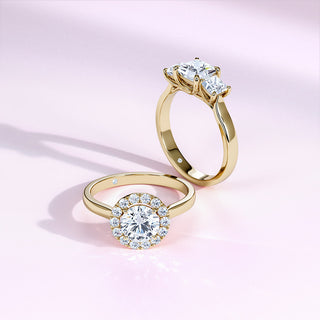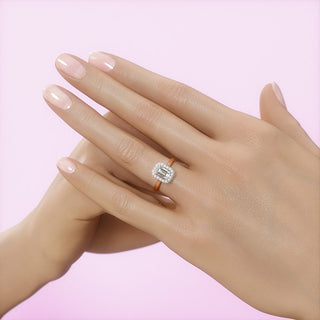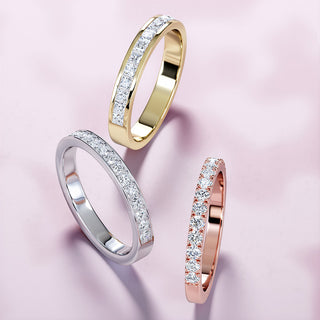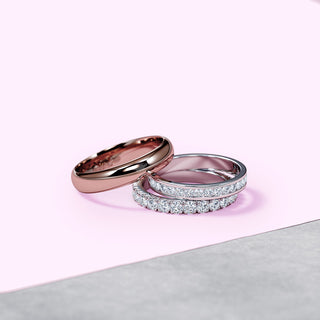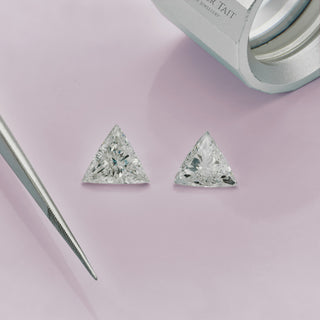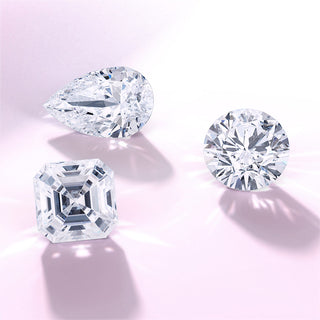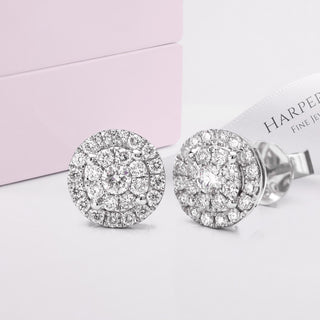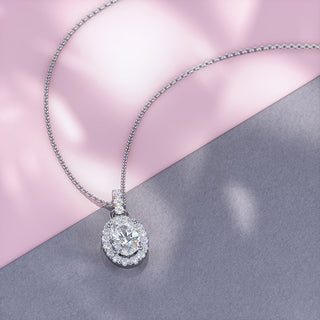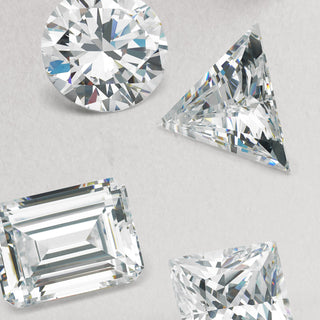Sometimes the amount of decision-making involved in choosing the perfect wedding band can be overwhelming. Even classic, plain wedding bands come in a wide choice of profiles and depths.
Choosing the weight of your ring might not feel like the most exciting part of the process, but it's a vital one for the perfect comfort fit. When searching for your perfect wedding band, you're looking not only for an aesthetically pleasing piece, but a ring that will be comfortable to wear for the rest of your life. And that is where weight and depth come in.
If the selection process feels daunting, we're here to help. Here we explore different weights of wedding rings , to help you find a band that suits your personal preferences and lifestyle.

What are Rings Weights?
Wedding rings come in a choice of weight, usually light weight band, medium-weight wedding band, and heavy weight band.
The actual gram weight of any given wedding ring will vary depending on the width and finger size. So when we talk about the differences between light, medium, and heavyweight, we’re really talking about their depth.
What is Ring Depth?
Ring depth refers to the thickness of the band, or how high it sits on the finger. A deeper-than-average ring is referred to as heavyweight, while a shallower ring is known as lightweight.
It is the depth of a ring - how thick the metal is - that determines the weight. Depth is measured in millimetres, taken from the centre of the ring where it is the heaviest. This is because some wedding ring profiles , such as a court or bevelled edge ring , have a shallower depth at the edges.
There’s no industry standard for what is considered ‘light’ or ‘heavy’. The actual depth of any given style may vary between jewellers, so it is important to know the actual depth of a ring if you wish to compare between brands. One jeweller’s ‘heavy’ or ‘light’ might be another jeweller’s standard depth.
At Harper Tait, we consider a lightweight ring as one with a depth of 1.4mm. A medium-weight ring has a depth of 1.7mm, while a heavyweight ring is 2.3mm deep.
The depth of a ring affects its overall weight. A heavyweight ring will have more metal than a light or standard depth one and, therefore, more gram weight. So the deeper a ring, the more expensive it is compared to a shallower ring of the same width and size.

Understanding Ring Weights
Wedding ring weights can vary significantly depending on several factors, including the type of metal used, the width and thickness of the band, and the ring size . Understanding the different weights of wedding rings can help you make an informed decision when choosing the perfect ring for your special day.
When we talk about wedding ring weights, we’re referring to the actual gram weight of the ring, which is influenced by its depth, width, and the metal it’s made from. For instance, a platinum ring will generally weigh more than a gold ring of the same size due to the higher density of platinum. Similarly, a wider or thicker band will have more metal and thus weigh more. Your ring size also plays a role; larger sizes require more metal, increasing the overall weight. By understanding these factors, you can better navigate your options and find a ring that feels just right on your finger.
Factors Affecting Ring Weight
Several factors can affect the weight of a wedding ring, including:
Metal Type : Different metals have varying densities which can have an affect. For example, platinum rings are typically heavier than 14k gold rings of the same size. This is due to the higher density of platinum, making it a more substantial choice.
Band Width and Thickness : Wider and thicker bands will generally weigh more than narrower and thinner ones. A medium weight wedding band will feel different from a heavy weight wedding ring, so it’s important to consider what feels comfortable for you.
Ring Size : Larger ring sizes require more metal to create the larger size, which can increase the weight of the ring. This means that a size 10 ring will weigh more than a size 6 ring, even if they are the same design.
Design : The design of the ring can also have an impact . For example, a ring with a comfort fit will likely weigh more than a ring with a classic fit due to the additional metal used to create the rounded interior.
By considering these factors, you can better understand how different elements contribute to the overall weight of your wedding ring, helping you choose a ring that meets your preferences and needs.
What is Ring Width?
The width of a ring refers to its measurement from one side to the other. It’s one of the most obvious aesthetic choices to make when it comes to a plain wedding ring, and it really comes down to personal choice.
The most popular widths for ladies’ wedding rings are between 2mm-3mm, while men's wedding rings tend to be 4mm-6mm. However, choose a width that feels comfortable, that feels like ‘you’, and that pairs with your engagement ring.
If you want to add an eternity ring in future, make sure your chosen width leaves room between the base of your ring and the knuckle to add another ring.
If you’re choosing a particularly wide ring, it’s important to double-check the finger sizes. Width can impact the fit of the ring, and a wide ring can feel more snug to wear. When choosing a wider ring, you may require a larger finger size to feel comfortable.
Depth and width go hand-in-hand, so it’s important to consider both when choosing your ring. A very shallow ring might feel ‘sharp’ in a very large width, particularly if your chosen profile tapers in depth at the edge.
What Wedding R ing Depth Should I Choose?
The depth of your wedding ring affects three things - cost, comfort, and appearance. The depth of your wedding ring is a crucial aspect of its ring design, influencing not only its cost but also its comfort and appearance.
Price
First, there is price. A shallower ring will cost less than a deeper one of the same width, size and profile. Choosing a shallow ring can help bring the style of your dreams within budget.
That said, it is important not to compromise durability and comfort for cost. While it is possible to get very fine or shallow rings, they risk being easily damaged or bent.
Comfort Fit
Second, we consider comfort. A shallower ring will feel less obtrusive on the finger, ideal for people who aren’t used to wearing jewellery.
However, it is possible for a ring to be too shallow. If the edges are very thin, they may ‘dig in’ to the finger when worn and might feel sharp. At Harper Tait, even our lightest rings have been designed, and wear-tested, for comfort.
A deeper wedding ring feels weighty and luxurious. Particularly in a rounded profile such as a court, a heavyweight ring feels deliciously tactile. And if you’re heavy with your hands, a deeper band may be more durable.
But for someone who isn’t used to wearing jewellery, a heavy band might not be comfortable to wear for extended periods, particularly in a larger width. For smaller finger size, a very deep band might feel too high off the finger for comfort. If you’re not sure, try on a deep band before you choose.
Appearance
Finally, there are the aesthetics. The shallower a ring is, the less obvious your chosen profile will be. Some profiles, such as a bevelled edge, are only possible on a standard or heavy-weight ring, as there isn’t enough depth in a lightweight band for the way the edges are shaped.
If you are pairing your wedding band with an engagement ring, choose a depth and profile that matches your existing ring for a cohesive look.
Choosing the weight and width of a wedding ring is a personal decision that depends on your lifestyle, budget - and your finger!
It’s always best to try on different rings and see how they feel and look before making a final decision, whether you prefer a delicate, subtle band or a bold, luxurious wedding ring.
What is a good weight for a ring?
The weight you choose for your ring is personal.
At 1.7mm, our standard wedding rings are beautiful for everyday wear, and will become treasured heirlooms in the decades to come. The type of precious metal used, such as gold or platinum, also plays a significant role in determining the weight of the ring.
For a more luxurious feel, our heavyweight wedding rings - at 2.3mm - offer an irresistibly chunky, tactile feel.
Balancing cost-consciousness with practicality, our 1.4mm lightweight wedding bands have a lower profile, ideal for anyone who wants a barely-there feel on the finger, but still wants a high quality ring.
We believe it’s important to balance affordability with durability and comfort. We don’t offer incredibly thin wedding rings, as they just aren’t strong enough to withstand everyday wear. At a minimum of 1.4mm in depth, our rings offer 24/7 comfort and will stand the test of time.
What is a good width for a ring?
On average, the wedding ring width most women go for is between 2mm-4mm, with men’s rings usually at 5mm-7mm. It's important to consider finger sizes when choosing the width of your ring, as a wider band may require a larger size for a comfortable fit. However, it all depends on what looks and feels right on your finger, and perhaps what pairs best with your engagement or eternity ring.
If you’re not sure, the best option is to try on a selection of rings to see.
Are thin rings more comfortable?
A narrower-width ring can be more comfortable to wear than a wider band, particularly if you are not used to wearing jewellery. The ring design, including its width and profile, can significantly impact how comfortable it feels on your finger. That said, if you choose a soft profile such as a court, even a wider band will soon feel like a second skin.
A narrow ring will tend to be less expensive than wider bands due to the lower amount of metal used, but if you choose a very narrow to shallow you might find they are not as durable, particularly for an all-day-every-day piece like your wedding ring.
Is 1.5mm too narrow for a wedding ring?
The width of a wedding ring is a matter of personal preference. While some people prefer a narrower ring, others prefer a wider ring. For a plain wedding band, a width of 1.5mm is considered very narrow. At Harper Tait, our wedding rings start from 2mm in width, giving a delicate look but being durable enough for everyday wear.
If you’re considering a light weight, narrow ring, you may want to consider the following factors:
Comfort : A narrower ring may be more comfortable to wear, especially for those with smaller fingers. It can feel less obtrusive and more natural on the finger.
Style : A narrower ring can have a more delicate and elegant look, which may be suitable for those who prefer a more understated design. A 1.5mm band is more commonly used for stacking rings or as an accent to a wider band - for instance, as a small strip of yellow gold to add colour to an all-white stack.
Durability : While a 1.5mm wedding ring is a delicate and subtle look, it may not provide the durability needed for everyday wear, especially if you work with your hands or engage in activities that may damage your ring. It’s important to consider how the ring will hold up to daily wear and tear.
Ultimately, the decision to choose a 1.5mm ring will depend on your individual needs and preferences. It’s essential to try on different widths and styles to find the ring that best suits your needs and budget.
How we can help!
If you need any help choosing your wedding ring, we’re always here to help and to show examples - even if you can’t make it into the store to see us! Simply reach out on info@harpertait.com . Or browse our collections of platinum rings, rose gold rings, white gold rings or gold rings.


